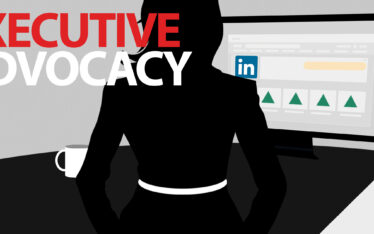
The way to grow your small business is to think like a Fortune 500 enterprise. Small businesses across the country—like those listed in this recent Forbes article — are making big impacts by following the marketing secrets of much larger brands. I’ve been working with and learning from some of the world’s most powerful brands since 1993. There have been a lot of changes in the Marketing industry since then. But the most successful, well-known brands in the world follow the same set of rules. The way they approach a challenge, develop a campaign, and learn from each marketing effort can be tied back to 5 pillars. The good news is that you don’t have to have a Fortune 500 budget to put these Fortune 500 pillars into practice. Small businesses can follow these tips to create powerful campaigns that drive growth for their own brands.
Marketing Pillar #1 Knowledge
Executives at Fortune 500 companies constantly refer to recent articles, insights, and research in conversation. It’s automatic. They constantly search for new information that can teach them about their industry, their customers and what sales and marketing tactics and tools are available. If you want to see the type of success these companies routinely demand, you need to have a learner’s mindset. Soak it all in, ask questions, and share insights. No campaigns are created, nor content published, without direct insights from subject matter experts (SMEs).
Small Business Take Away: Look to the experts within your own business or industry for insights. Read thought leadership articles. Dive into studies and reports. Request interviews. [Find interview tips here.]. Rather than refer to yourself as a guru or expert, let curiosity and a desire to learn drive everything you do.
Marketing Pillar #2 Science!
The world’s most successful brands use data to inform every strategy. While they’re able to put a lot of zeros behind paid media campaigns, that doesn’t mean you need deep pockets to see real results. When it comes to conversion rate optimization, 60% of companies say a|B testing is “highly valuable.” Fortune 500 companies test every paid media campaign and they do so in a calculated way intended to divulge insights and continue to improve. They look for meaningful insights in the data they collect and use it to make smarter, more informed decisions. If no data exists, they create their own. Whether they are running a paid social media campaign, an email campaign or a digital banner ad, they test, track, tweak, and repeat!
Small Business Take Away: Social media audiences are constantly growing and changing, so it pays to test every paid campaign. Create two versions of every post. Both versions should be identical, but for one single change. It’s critical that you choose just one element – everything else must be identical to create a “clean” test. Be strategic – rather than simply testing an image of an object against an image of a person, get more granular. Is it one person? Two? Or perhaps a group? Is the person facing left or right? Looking at the camera or down at the CTA? If it’s a group, are they looking at each other or the camera? The more specific you are, the clearer your results will be [Learn about the 4-step strategy our Social Command Studio follows for small business social media.]
Marketing Pillar #3 Credibility
Leading brands back up their claims with credible statistics. Fortune 500 companies commission credible sources such as Gartner or PEW Research for a proprietary study in order to gain credibility and add value to their content. They understand that audiences want to identify with their peers. They want to know what others think or what other like-minded brands are doing. The most successful brands include relevant stats and compelling data to back up what they say, to convince prospects and convert leads. Outside of their own research, leading brands share stats from well-known, highly credible sources. Rather than bend stats to fit their objectives, they look for stats that support their position.
Small Business Take Away: You don’t have to commission a major study to earn credibility. Chances are strong that if you need a stat, someone else has already done the heavy lifting for you. Not sure if the source is credible? Use the college professor CRAAP test. You can also run smaller studies of your own via tools such as Survey Monkey or Google Surveys.
Marketing Pillar #4 Integration
Fortune 500 brands use a mix of tactics and channels to reach their audiences and meet their objectives. They might use digital marketing tactics to reach audiences and drive traffic, but they incorporate offline tactics in order to build relationships and meet customers where and when they’re ready to purchase. They use paid social media (LinkedIn Sponsored Content, or Facebook Boosted Posts, for example) to increase brand awareness and build an audience of followers, but they also rely on organic social media engagements to build trust and encourage brand loyalty and advocacy.
Beyond creating integrated campaigns, the most successful enterprise brands integrate across teams and departments. It’s why you’re seeing a lot more Chief Revenue Officers on LinkedIn these days. They understand that while marketing and sales might have different objectives, they both ladder up to a greater objective.
Small Business Take Away: If you’re relying on one tactic (Google Ads, for example) to do it all, you’re missing out on a large portion of your audience and letting prospective customers – and opportunities – slip through the cracks. Be sure your strategy incorporates the right tactics to meet all of our objectives. [Watch the 85-second Transmissions video on how to integrate your small business marketing strategy now.]
Marketing Pillar #5 Rationale
Successful marketers never move forward with a strategy without first having a clear understanding of why they’re creating content. Nothing is assumed. If they publish a thought leadership e-book, you can bet they’ve done the research and have created a strategy backed by data that explains why an e-book is the proper format for the content. They know exactly what objectives they want to reach and why that specific content will resonate with the intended audience. While they monitor social platforms, they don’t stop there. They participate in social listening—that is, they go deeper than what typical monitoring tools to quickly move from insight to action, identify opportunities to differentiate their brand and uncover emerging trends.
Small Business Take Away: Before you decide to create an infographic, run an email campaign, or start posting on Facebook, be sure you can answer why, what, when, where and how. Fortune 500 brands make it look easy, but it takes a collaborative effort behind the scenes—research, competitive analyses, and a deep understanding of their target audience. Be ready to show data points that prove this is the best format and explain how it will meet your brand objectives. Do you research to uncover facts about your target audience. Gathering intel and creating a sound strategy will ensure that your brand is set up to succeed. Look for a social media partner specifically focused on helping small businesses. Sprout Social’s Agency Partner Directory is a great place to begin your search.
Interested in putting these 5 pillars into practice to grow your small business? Cool. We can’t wait to talk with you! Reach out here or contact me directly at [email protected].


